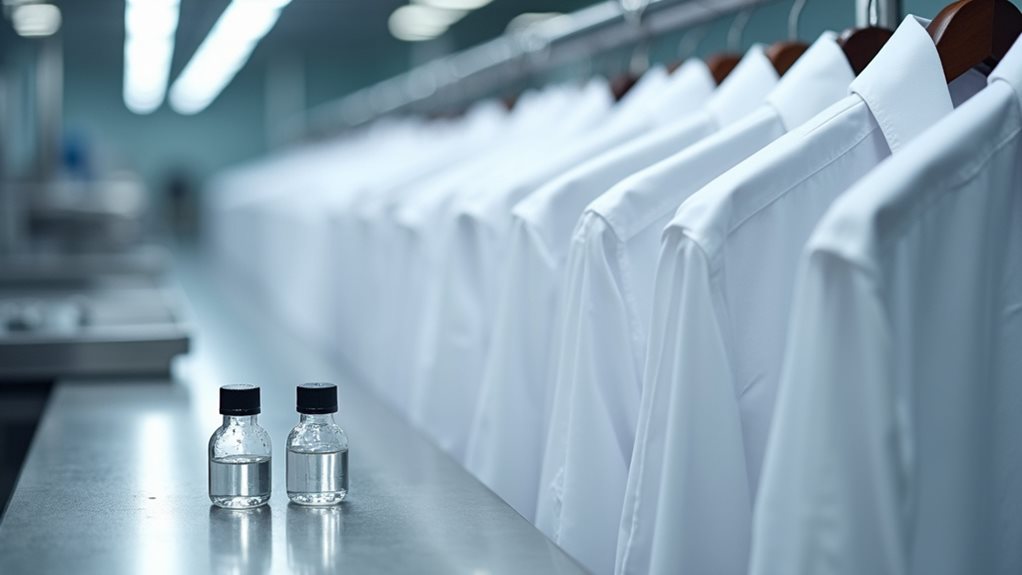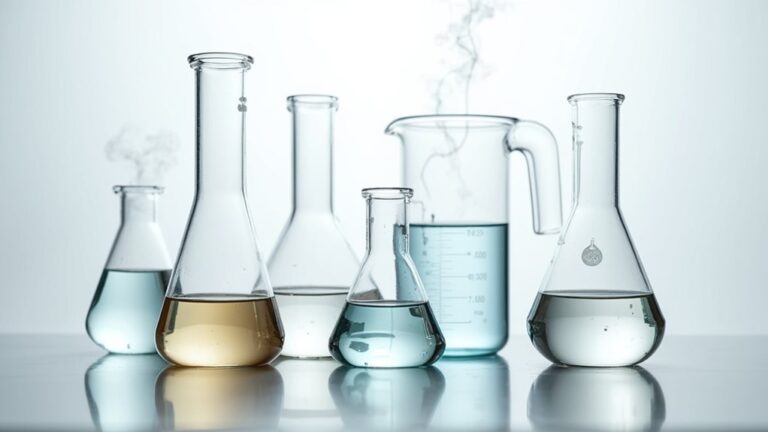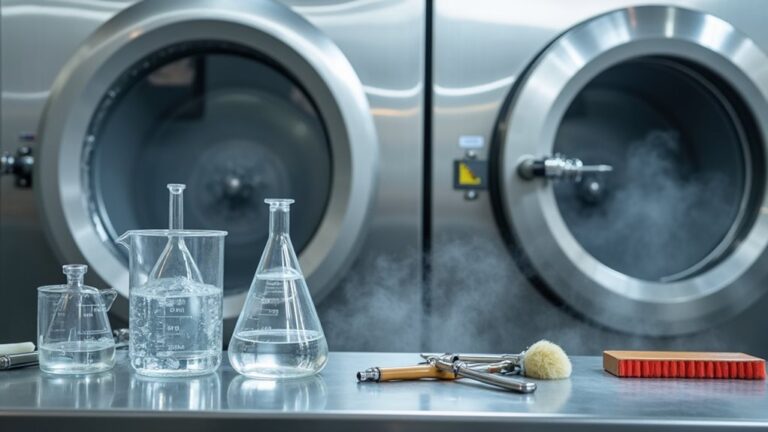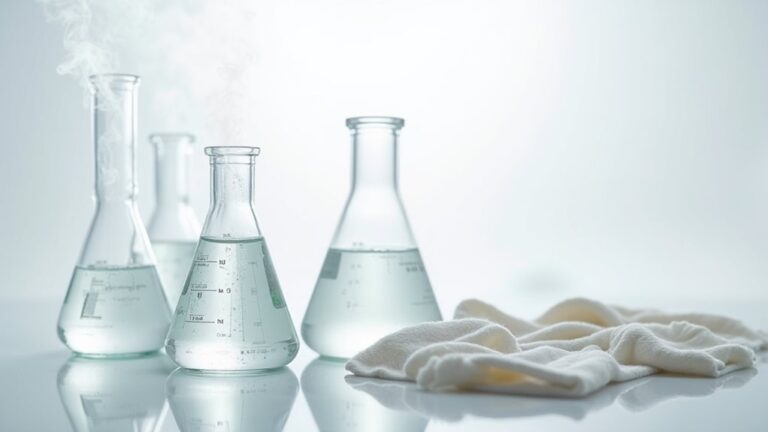Yes, dry cleaning absolutely disinfects your clothes through intense heat that reaches up to 325°F during pressing and steaming, creating a thermal environment that obliterates bacteria, viruses, and other nasty pathogens that survive regular home washing. I’ve learned that while your washing machine maxes out around 140°F, professional dry cleaning’s multilayered heat approach, combined with specialized solvents, effectively eliminates stubborn microorganisms like influenza and COVID-19 that can linger on fabrics for days. Understanding the complete science behind this process reveals why it’s superior protection.
How High Heat in Dry Cleaning Eliminates Germs and Bacteria
When you’re wondering whether your favorite blazer can survive both stains and germs, the answer lies in understanding how dry cleaning‘s intense heat becomes nature’s own disinfectant.
The dry cleaning process harnesses multilayered heating that reaches up to 220°F during steaming, creating an environment where bacteria and viruses simply can’t survive.
The intense 220°F steaming temperatures in dry cleaning create a hostile environment that eliminates bacteria and viruses on contact.
Professional dry cleaning takes this further with pressing temperatures between 300-325°F, guaranteeing an effective way to kill even the most stubborn pathogens.
This steam heat treatment works like a supercharged fever that disinfects your clothes in about 30 minutes, making it far more thorough than tossing items in your home washer.
The petroleum-based solvents used in dry cleaning also contribute to destroying microorganisms, working alongside the high temperatures to significantly reduce the microbial load on your garments.
Think of high heat as your garment’s personal bodyguard against germs!
What Types of Germs and Viruses Can Live on Clothing
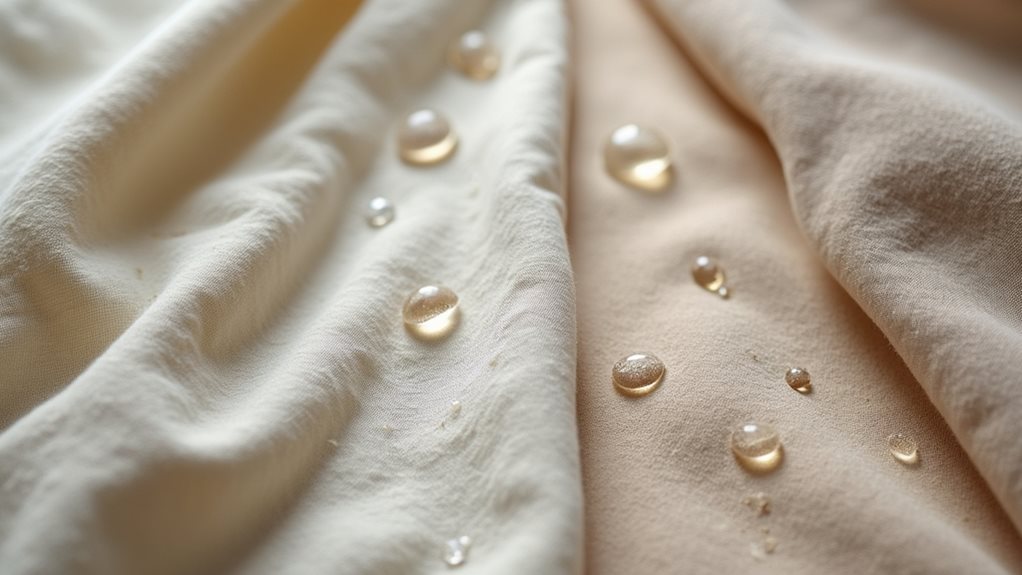
Your favorite sweater might look innocent hanging in your closet, but it’s actually hosting an invisible party of unwanted guests that you definitely didn’t invite.
Those germs and viruses aren’t just hanging around for fun – they’re creating serious health risks that’ll make you think twice about your laundry process.
The influenza virus can camp out on your clothes for up to 48 hours, turning your fabric into a transmission highway you never saw coming.
Staphylococcus bacteria love transferring from contaminated clothes straight to your skin, causing infections that’ll have you googling “why didn’t I dry clean this sooner?” 😅
Even COVID-19 survives on cloth for nearly two days, which means proper cleaning and disinfecting isn’t just recommended – it’s crucial for protecting yourself and your family from these microscopic troublemakers.
Fortunately, the dry cleaning process creates an environment hostile to most pathogens through its use of chemical solvents and high heat treatment, effectively eliminating the majority of bacteria and viruses that regular washing might miss.
The Science Behind Dry Cleaning’s Disinfection Process
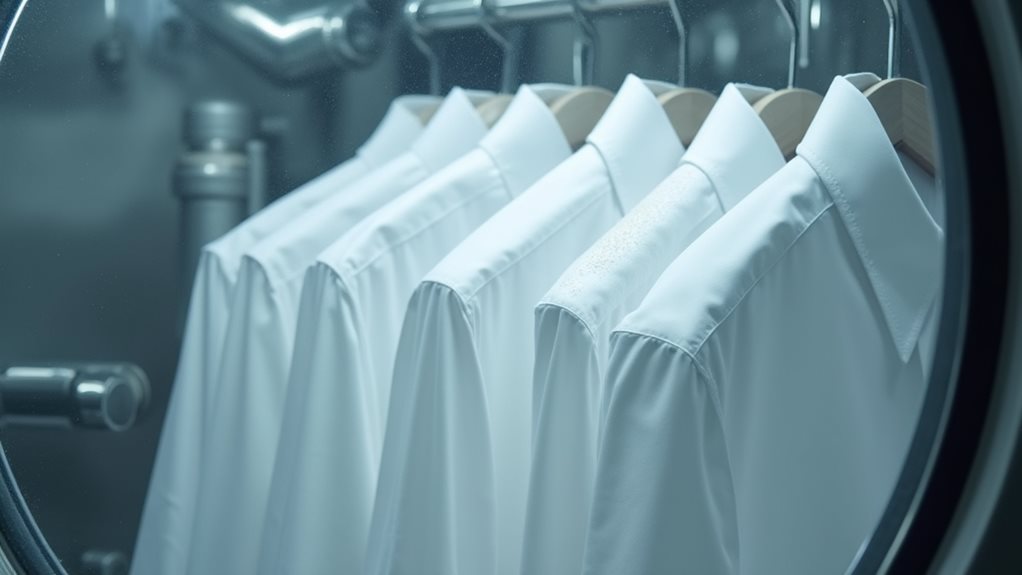
Now that we recognize what microscopic party crashers are living rent-free on your clothes, let’s explore how dry cleaning becomes your fabric’s personal bodyguard against these unwanted guests.
Professional dry cleaning services use high temperatures reaching 200-220°F during steaming, which effectively eliminates viruses and bacteria that regular washing might miss. This multilayered heat approach doesn’t just kill bacteria—it creates a thermal fortress that obliterates microorganisms in about 30 minutes.
The steam heat during pressing adds another layer of protection at 160°F, guaranteeing effective cleaning throughout every fiber. Think of it as your garment’s spa day with benefits!
EPA-approved chemicals improve this process, helping disinfect your clothes while removing stubborn dirt and preventing residue buildup. Many facilities are now adopting safer alternatives like wet cleaning and liquid CO2 to reduce health risks while maintaining effective disinfection.
Comparing Professional Dry Cleaning to Home Washing Methods
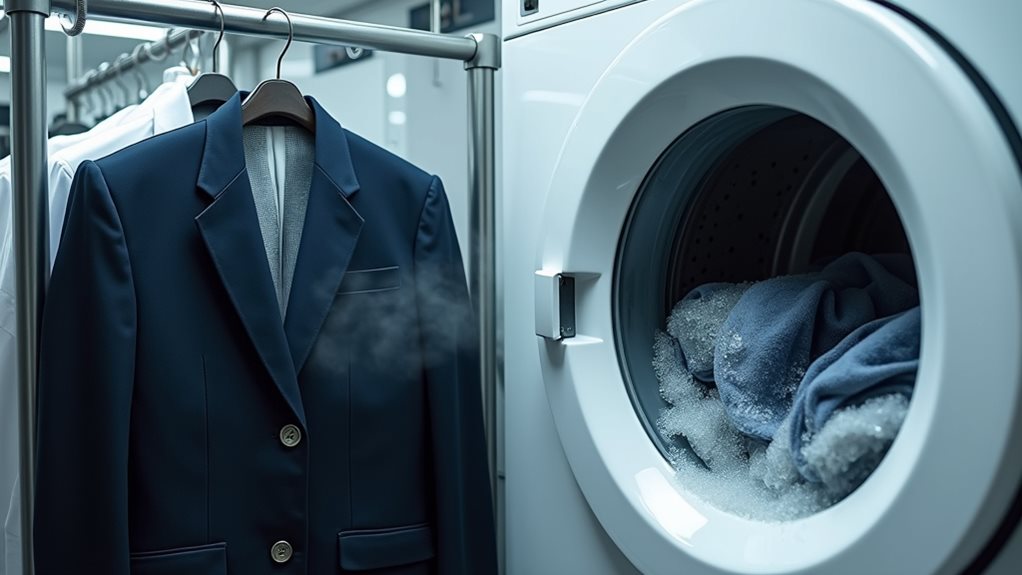
While your trusty washing machine at home works hard to tackle everyday dirt and grime, it’s fundamentally bringing a water balloon to a heat gun fight when compared to professional dry cleaning‘s disinfection prowess.
Here’s the honest truth: home washing typically maxes out around 140°F, while professional dry cleaners release temperatures reaching 325°F – that’s enough high heat to make germs wave the white flag 🏳️.
Your home method can’t match the specialized cleaning solvent that laundry services use fresh for each load, preventing cross-contamination that might lurk in your machine’s depths.
When it comes to delicate fabrics, dry cleaning kill rates for pathogens far exceed what your gentle cycle achieves, guaranteeing you disinfect without destroying those precious garments you’d cry over ruining.
The chemical solvents used in professional dry cleaning are particularly effective at eliminating oil-based contaminants and pathogens that water-based washing simply cannot reach or remove.
When to Choose Dry Cleaning for Maximum Germ Protection

Because certain situations practically scream for professional disinfection, knowing when to choose dry cleaning over your home washing machine can mean the difference between truly clean clothes and garments that simply look clean on the surface.
When you’ve spent time around sick family members or crowded public spaces, professional services offer superior germ protection through high heat steaming that reaches 200-220°F – temperatures your washing machine simply can’t match.
Those “Dry Clean Only” labels aren’t just suggestions; they’re your ticket to fabrics getting the deep disinfection they deserve.
Those care labels are your gateway to professional-grade sanitization that home machines simply cannot deliver.
During flu season, I’ve found that eco-friendly solvents used by professionals disinfect more thoroughly than my usual routine, and contactless pickup means I’m not even risking exposure at busy laundromats.
However, it’s important to allow freshly dry-cleaned items to air out before wearing them, as residual chemicals on clothing can pose potential health risks from traditional solvents.

